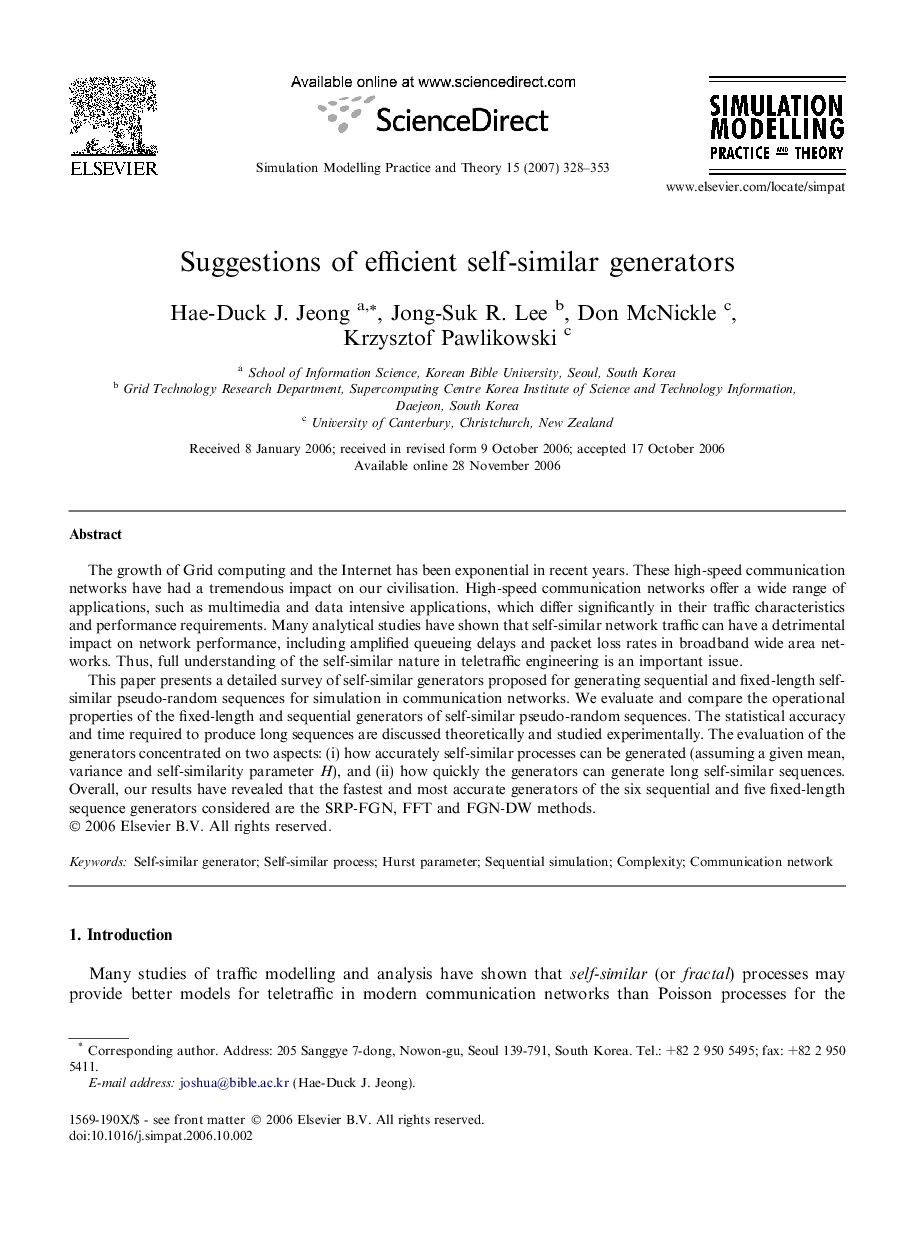| کد مقاله | کد نشریه | سال انتشار | مقاله انگلیسی | نسخه تمام متن |
|---|---|---|---|---|
| 492144 | 721111 | 2007 | 26 صفحه PDF | دانلود رایگان |

The growth of Grid computing and the Internet has been exponential in recent years. These high-speed communication networks have had a tremendous impact on our civilisation. High-speed communication networks offer a wide range of applications, such as multimedia and data intensive applications, which differ significantly in their traffic characteristics and performance requirements. Many analytical studies have shown that self-similar network traffic can have a detrimental impact on network performance, including amplified queueing delays and packet loss rates in broadband wide area networks. Thus, full understanding of the self-similar nature in teletraffic engineering is an important issue.This paper presents a detailed survey of self-similar generators proposed for generating sequential and fixed-length self-similar pseudo-random sequences for simulation in communication networks. We evaluate and compare the operational properties of the fixed-length and sequential generators of self-similar pseudo-random sequences. The statistical accuracy and time required to produce long sequences are discussed theoretically and studied experimentally. The evaluation of the generators concentrated on two aspects: (i) how accurately self-similar processes can be generated (assuming a given mean, variance and self-similarity parameter H), and (ii) how quickly the generators can generate long self-similar sequences. Overall, our results have revealed that the fastest and most accurate generators of the six sequential and five fixed-length sequence generators considered are the SRP-FGN, FFT and FGN-DW methods.
Journal: Simulation Modelling Practice and Theory - Volume 15, Issue 3, March 2007, Pages 328–353